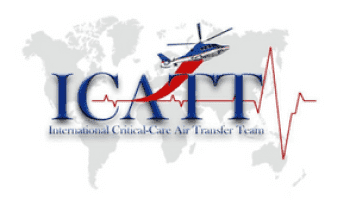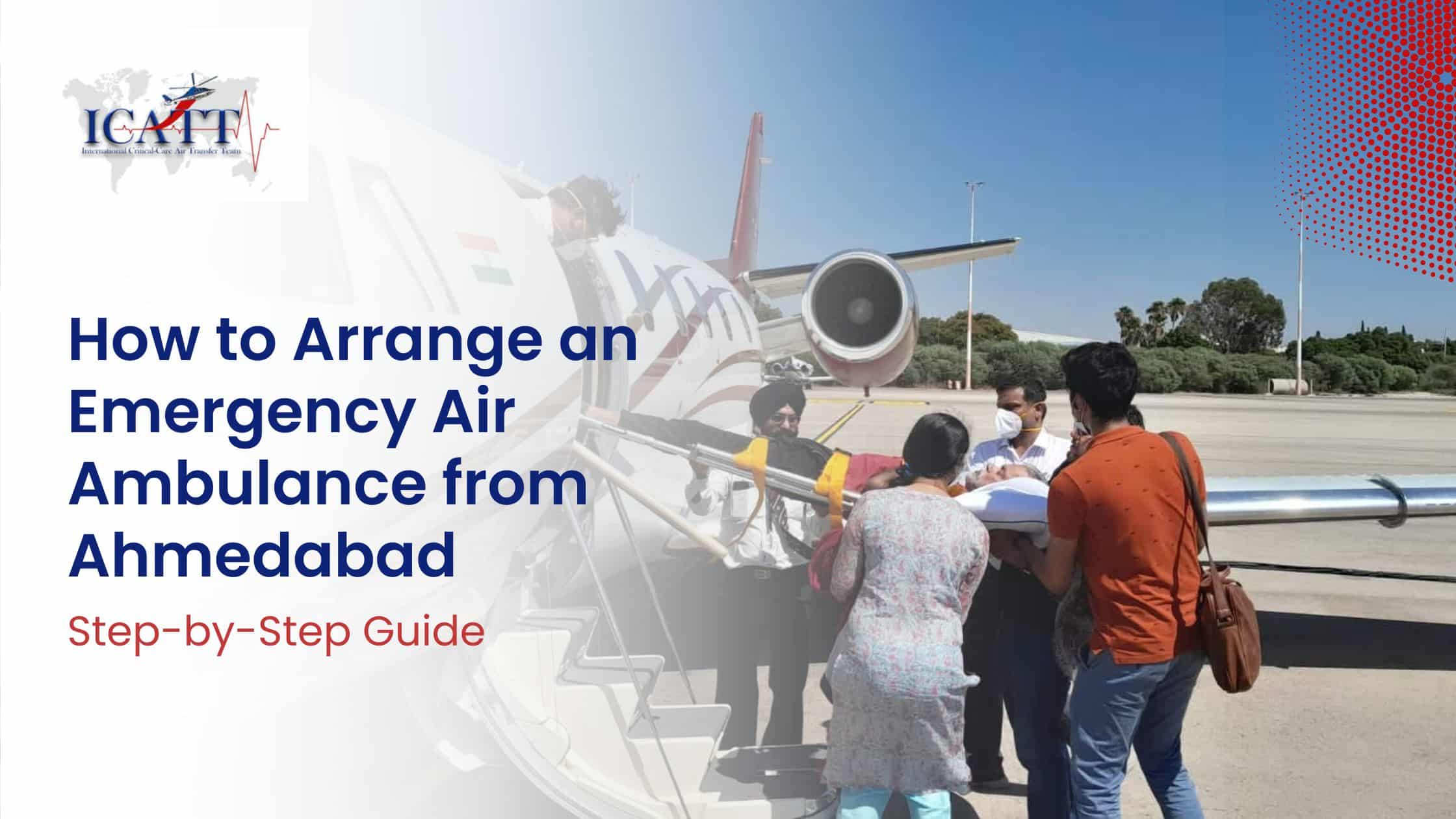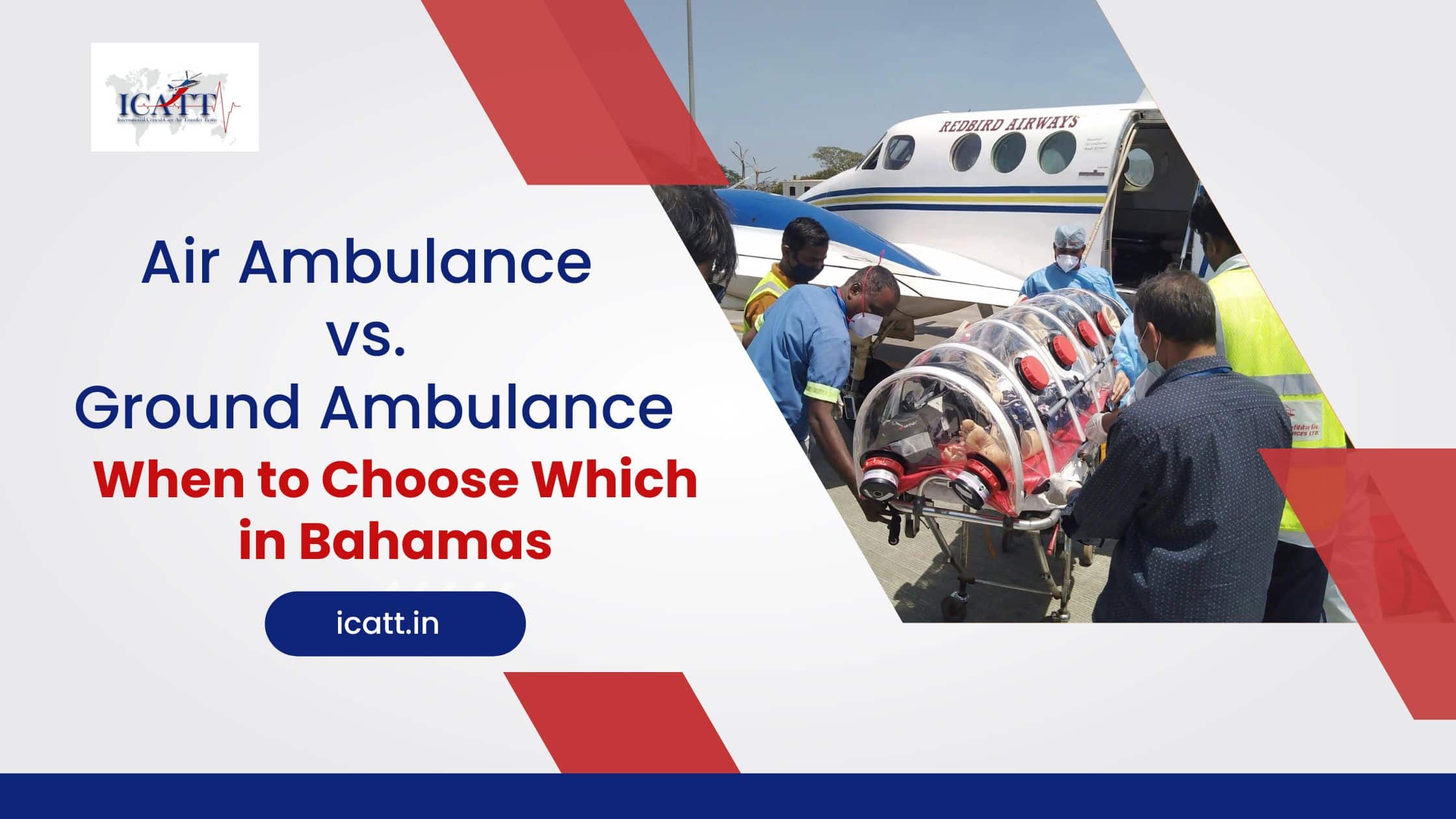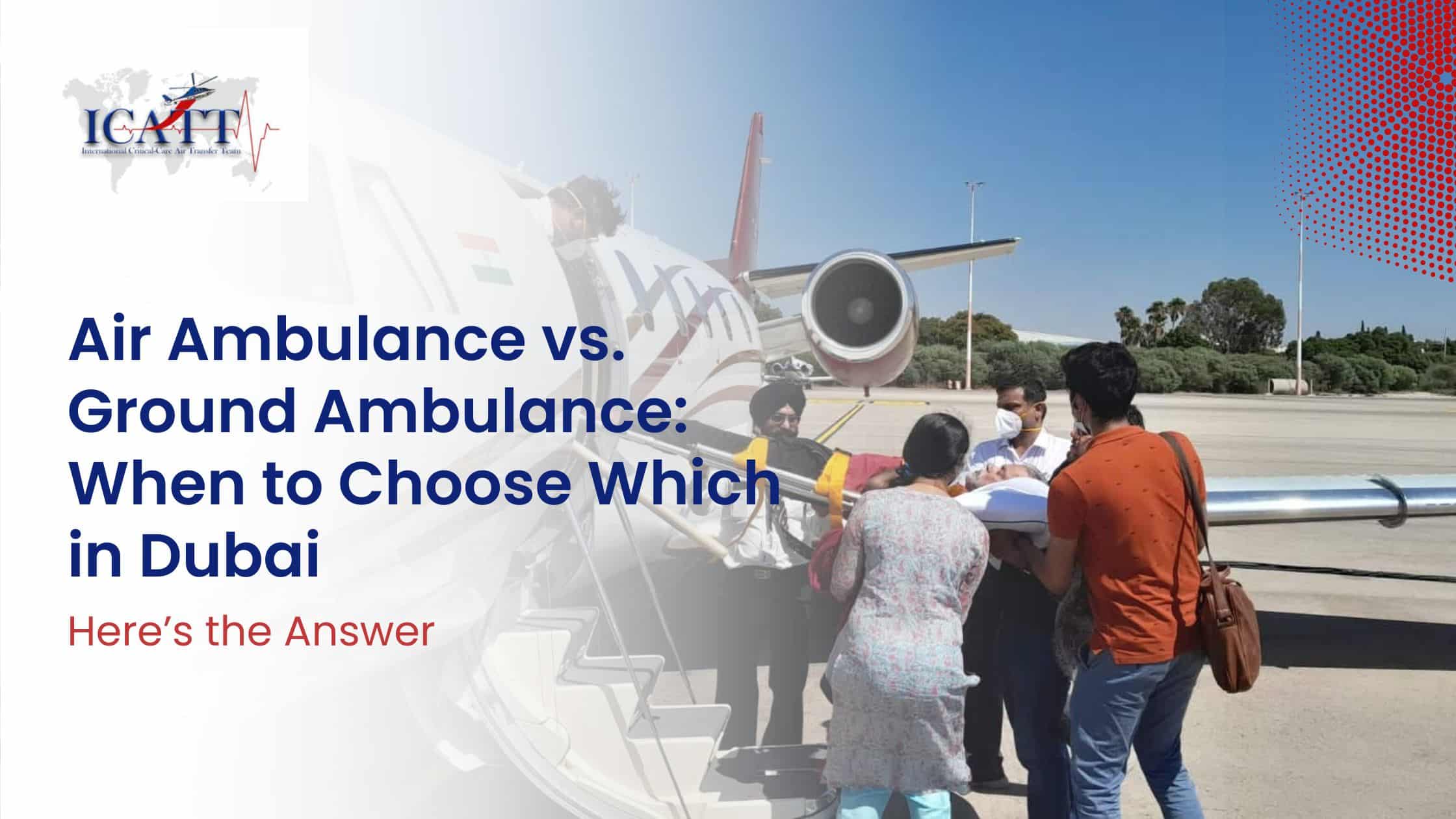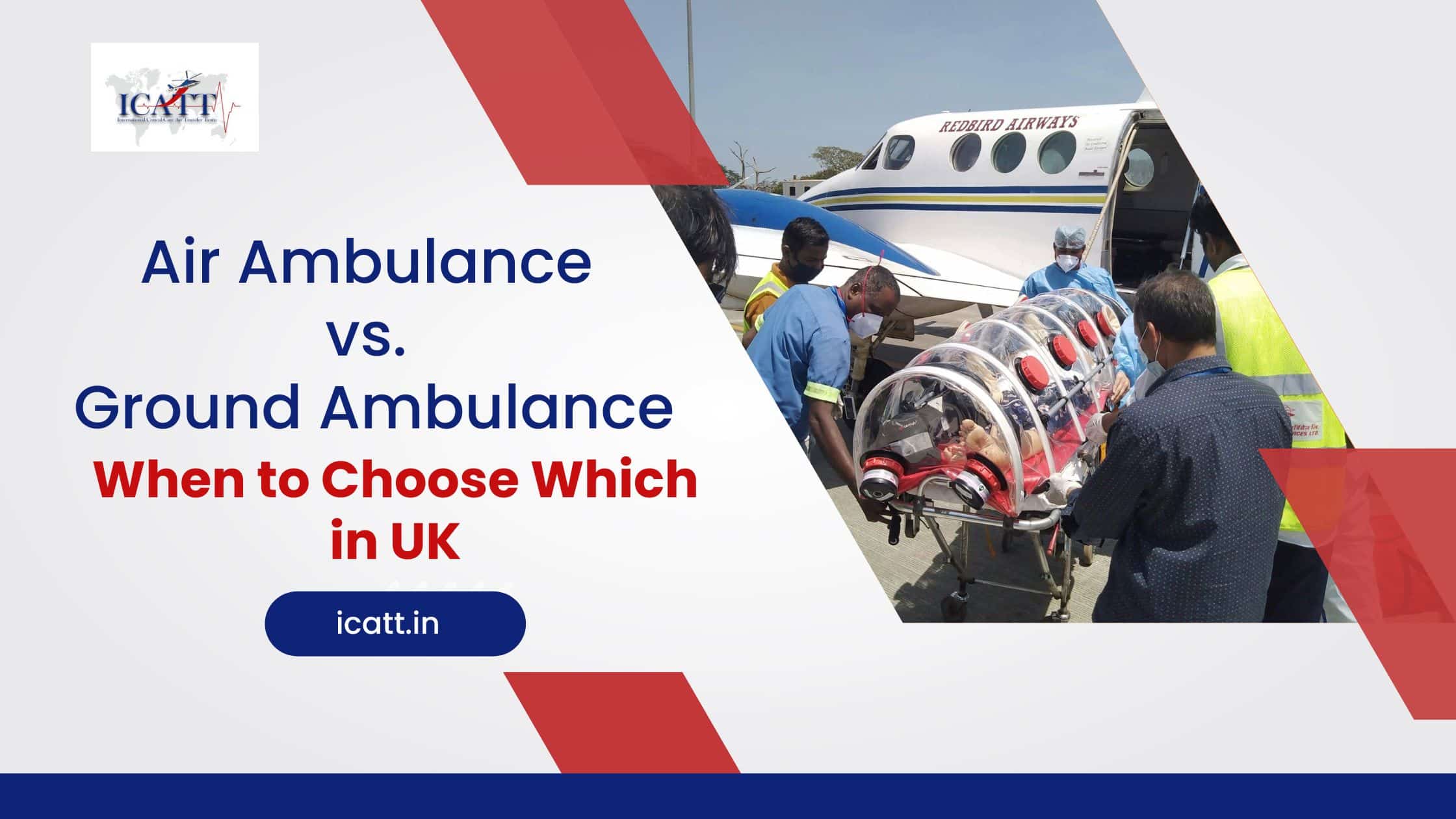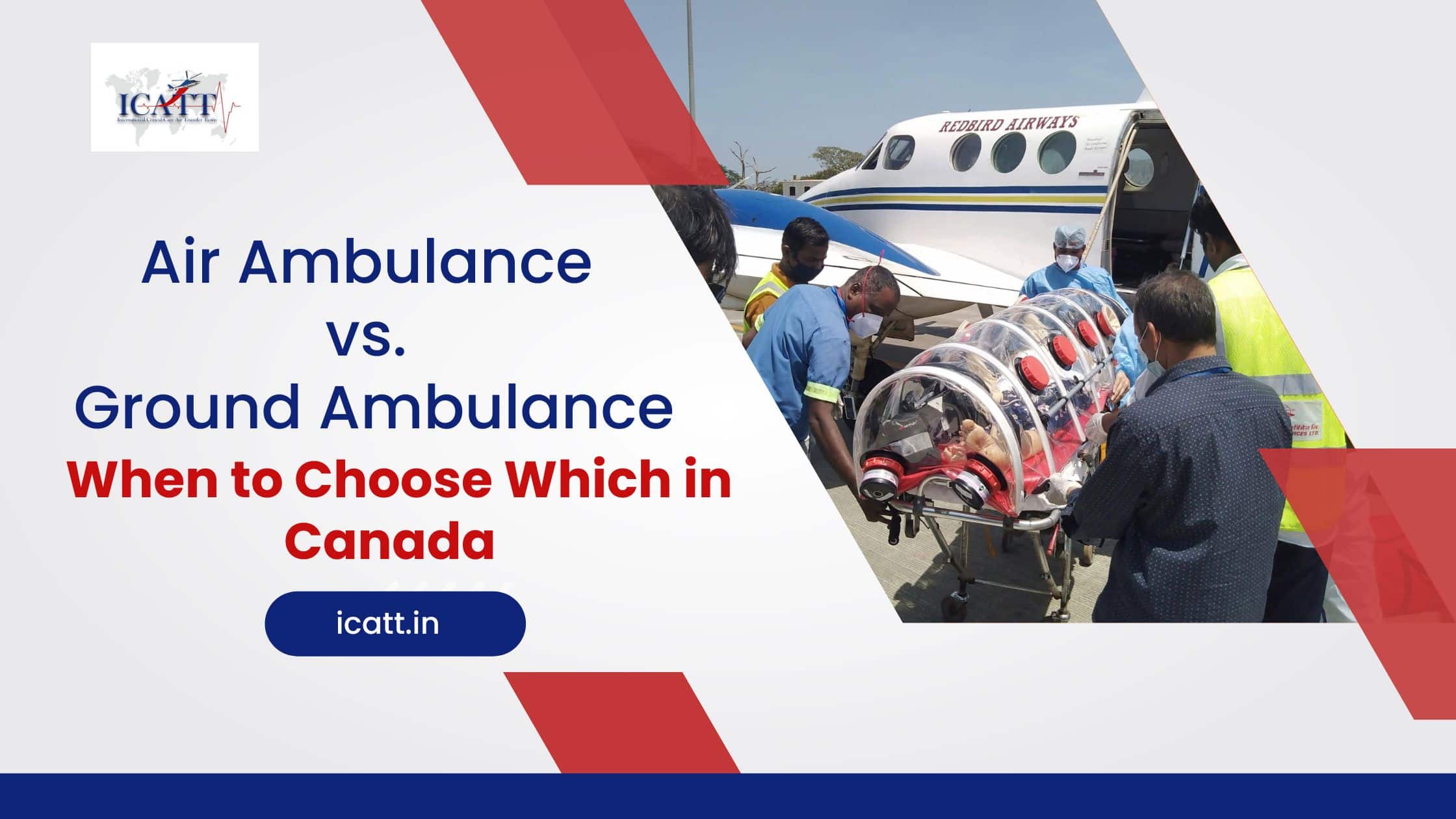Bad health, accidents, and seeing our loved ones ill is always frightening. But what’s even scarier is a sudden emergency. No one is ever truly prepared to think clearly or act fast when it hits.
Now, imagine that someone meets with a terrible road accident and there’s a head injury, broken bones, internal bleeding, chest trauma — all happening at once. This kind of critical condition is what doctors call polytrauma. And in such cases, time is everything and every second counts.
Unfortunately, many lives are lost simply because the patient couldn’t reach the right medical facility on time. In moments like these, a regular road ambulance may not be the best option, especially when traffic delays or hospital limitations stand in the way of urgent care.
That’s where Emergency Air Ambulance services come in — not just as a choice, but as a lifesaving necessity. These services help shift critically injured patients quickly to advanced hospitals that are equipped to handle such emergencies.
In fact, today, many private and government hospitals are actively promoting air ambulance services to make patient transfers faster and more efficient, especially in polytrauma cases.
So, let’s know why an air ambulance service for polytrauma patients is so crucial, and how it actually works in real-life emergencies.
What Exactly is Polytrauma?
Polytrauma means multiple traumatic injuries happening at the same time. A person might have:
- Brain injuries
- Chest and abdominal trauma
- Spine or pelvic fractures
- Internal bleeding
- Shock or unconsciousness
Now here’s the tough part — such injuries don’t wait. The patient’s condition can change within minutes. If not treated at the right time and in the right hospital, things can take a turn for the worse very quickly.
Why Ground Ambulance May Not Be Enough?
Since childhood, we have always been told that in a medical emergency, a ground ambulance is the first thing to call. That’s what we saw, learned, and believed. But rarely were we made aware of the option of an air ambulance, even though this isn’t a new service. In fact, the concept has existed since the 1800s.
Of course, ground ambulances are essential and widely available. But in polytrauma cases, where multiple serious injuries occur at once, what matters most is speed, specialized care, and quick decision-making.
In cities, road ambulances often get stuck in heavy traffic. In remote or rural areas, just finding a properly equipped ambulance can be difficult. Some areas don’t even have motorable roads. And here’s the bigger concern — not every ground ambulance is set up to handle advanced trauma care during transit. That’s a risk no one can take when a life hangs in the balance.
The Air Advantage — Speed + ICU in the Sky
Here’s where Emergency Air Ambulance services come in. Think of it as a hospital flying in the sky. With ICU-grade equipment, ventilators, cardiac monitors, oxygen, and most importantly, a team of skilled doctors and paramedics — the patient starts getting treatment even before reaching the hospital.
Whether it’s within India or across borders, an International air ambulance service ensures that even foreign patients or Indian patients abroad can be transferred quickly and safely.
Some real advantages:
- Quicker reach to trauma centers in bigger cities
- No delays due to roadblocks or traffic
- Advanced support during the journey
- Continuous monitoring and stabilisation
Real-Life Scenarios: When an Air Ambulance Saves Lives
Indians and foreigners alike have experienced real-life situations where an air ambulance truly made the difference. To understand it better, imagine a tourist meets with a serious accident on a remote highway in Uttarakhand. The local hospital manages to stabilise him, but he needs brain surgery and a specialised trauma ICU, which is only available in Delhi. In such cases, reaching Delhi quickly and safely with full medical support is only possible through air ambulance services.
Another situation — an Indian student studying abroad gets into a major bike accident. The family wants him back in India for treatment and to be close during recovery. With coordination between the hospital and the air ambulance provider, the patient can be brought home in time with all medical arrangements in place.
In both these scenarios, a specialised air ambulance service for polytrauma patients ensures a smooth, timely, and well-managed transfer from take-off to landing, with complete care throughout the journey.
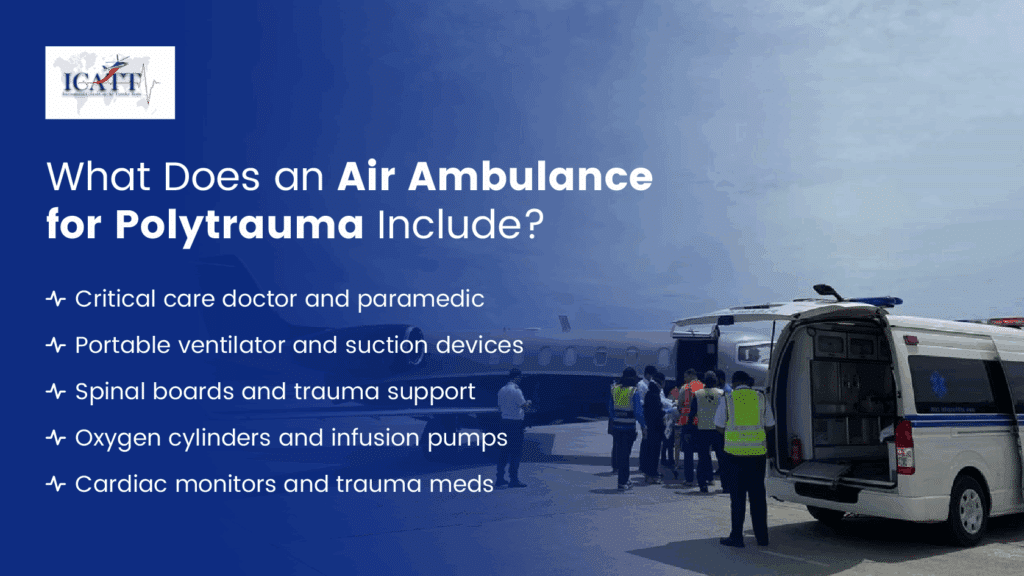
Note: In international transfers, all paperwork, hospital coordination, and immigration clearances are efficiently managed by the air ambulance provider and their team—ensuring this critical process is completed without delays.
ICATT: Handling Polytrauma Cases with Care
At ICATT, our team is trained for extreme emergencies. Every polytrauma patient is treated with compassion, urgency, and complete professionalism. We don’t just fly you we handle the whole journey.
From bedside pickup, coordination with doctors, in-flight monitoring, to hospital handover, our process is designed to make families feel supported and informed.
Even if the patient is outside India, our International air ambulance service ensures they are brought back home or shifted to a world-class facility safely.
When Should You Choose Air Over Ground?
| Situation | Ground Ambulance | Air Ambulance |
| Mild injuries | ✅ | ❌ |
| City-based short travel | ✅ | ❌ |
| Multiple injuries (polytrauma) | ❌ | ✅ |
| Remote/rural accident | ❌ | ✅ |
| International emergency transfer | ❌ | ✅ |
Hence, when it comes to polytrauma, there’s no time to think twice. The body is under multiple threats at once, and every passing minute can change everything. Choosing an air ambulance service for polytrauma patients is not about convenience; it’s about survival.
